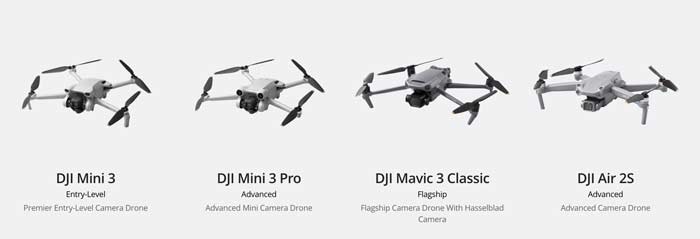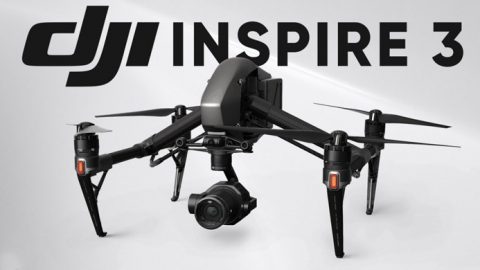DJI, a Chinese technology company, has revolutionised the world of drones with its innovative designs and advanced technologies.

Since its establishment in 2006, DJI has been at the forefront of drone manufacturing, and its drones have become the gold standard in the industry.
This blog post will explore the evolution of DJI drones and how the company has continued to set the bar higher with each release.
First Generation: Phantom Series (2013-2015)
DJI’s first major breakthrough came in 2013 with the release of the Phantom series. The Phantom 1 was a game-changer, offering a compact and portable design that made it easy to fly and maneuver. It had a built-in camera that could shoot 1080p videos and 14-megapixel photos. The Phantom 2, released in 2014, was an upgrade with improved stability and a new gimbal system, making it possible to capture smoother, more professional-looking footage.
Second Generation: Inspire Series (2015-2016)
DJI’s Inspire series, launched in 2015, was a significant step forward in drone technology. The Inspire 1 was a larger and more sophisticated drone with a 360-degree rotating camera that allowed for stunning panoramic shots. It was also the first DJI drone to feature retractable landing gear, making it easier to transport. The Inspire 2, released in 2016, improved upon its predecessor, with a more powerful camera and longer battery life.
Third Generation: Mavic Series (2016-2018)
The Mavic series, released in 2016, was a game-changer in the drone industry. It was the first foldable drone, making it incredibly portable and easy to transport. The Mavic Pro featured a 4K camera and a three-axis gimbal for smoother footage. It also had a longer range and longer battery life than previous DJI drones. The Mavic Air, released in 2018, was an upgrade with improved camera features and obstacle avoidance sensors.
Fourth Generation: Phantom 4 Series (2016-2018)
In 2016, DJI released the Phantom 4, which was a significant upgrade to its previous Phantom models. It had improved obstacle avoidance sensors and a new sport mode that allowed it to reach speeds of up to 45 miles per hour. The Phantom 4 Pro, released later that year, had a 20-megapixel camera and a one-inch sensor, making it possible to capture high-quality images and videos. The Phantom 4 Advanced, released in 2017, offered similar features to the Pro model but at a lower price point.
Fifth Generation: Mavic 2 Series (2018-2020)
The Mavic 2 series, launched in 2018, was an upgrade to the original Mavic Pro. It had improved camera features, including a Hasselblad camera on the Pro model, and a longer battery life. The Mavic 2 Zoom had a zoom lens that allowed for more creative shots. The Mavic Air 2, released in 2020, had even better camera features and longer battery life.
Sixth Generation: Mini Series (2019-2020)
In 2019, DJI launched the Mavic Mini, the company’s smallest and lightest drone to date. It weighed just 249 grams, making it exempt from most CAA drone rules. Despite its small size, it had a 12-megapixel camera and a 3-axis gimbal for stable footage. In 2020, DJI released an upgraded version, the Mini 2, with even better camera features and longer range.
Seventh Generation: FPV Series (2021)
The FPV series, released in 2021, marked a new direction for DJI drones. Unlike previous models, the FPV (first-person view) drones were designed for racing and freestyle flying, with a focus on speed and agility. The DJI FPV drone had a new form factor, with a traditional quadcopter design replaced by a hybrid quadcopter-flying wing. The FPV drone also featured a 4K camera capable of capturing high-quality footage while flying at high speeds. It had a new remote control, which included a built-in screen for live video transmission and control of the drone. The DJI FPV drone also offered advanced safety features, including an emergency brake and hover mode.
Eighth Generation: Air Series (2022)
In 2022, DJI launched its latest drone series, the Air series. The Air 2S was the first drone in the series, and it offered a significant upgrade to the Mavic Air 2. The Air 2S had a larger sensor, capable of capturing 20-megapixel stills and 5.4K video, and it had a longer battery life. It also had advanced safety features, including obstacle avoidance sensors on all sides of the drone.
Conclusion
DJI has come a long way since its first Phantom drone in 2013. The company has continued to push the boundaries of drone technology, with each new release setting a new standard for the industry. From the compact and portable Phantom series to the racing-focused FPV series and the latest Air series, DJI has consistently improved upon its designs and technologies, offering drone enthusiasts an unparalleled flying experience. With DJI’s continued innovation and dedication to safety, it’s safe to say that the future of drone technology looks bright.


